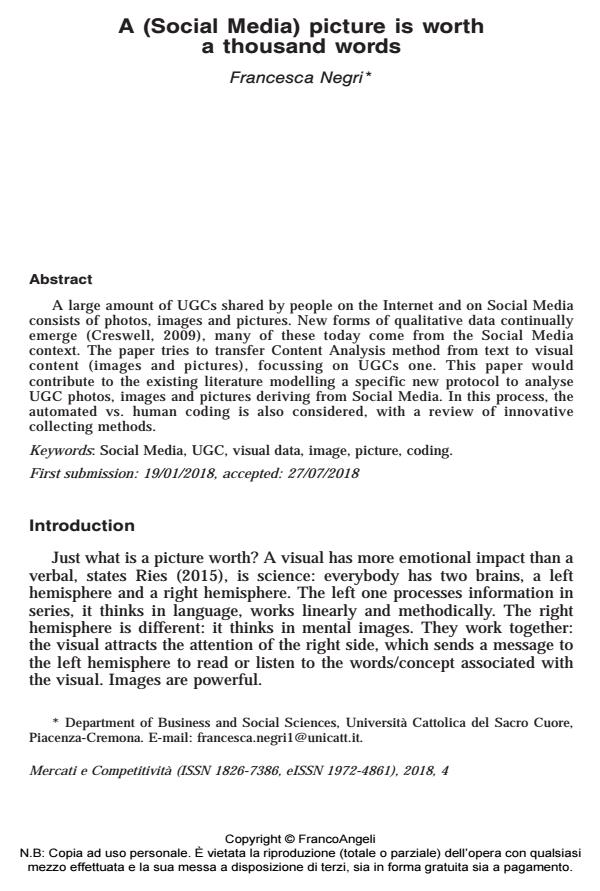A (Social Media) picture is worth a thousand words
Journal title MERCATI & COMPETITIVITÀ
Author/s Francesca Negri
Publishing Year 2018 Issue 2018/4
Language English Pages 18 P. 47-64 File size 508 KB
DOI 10.3280/MC2018-004004
DOI is like a bar code for intellectual property: to have more infomation
click here
Below, you can see the article first page
If you want to buy this article in PDF format, you can do it, following the instructions to buy download credits

FrancoAngeli is member of Publishers International Linking Association, Inc (PILA), a not-for-profit association which run the CrossRef service enabling links to and from online scholarly content.
A large amount of UGCs shared by people on the Internet and on Social Media consists of photos, images and pictures. New forms of qualitative data continually emerge (Creswell, 2009), many of these today come from the Social Media context. The paper tries to transfer Content Analysis method from text to visual content (images and pictures), focussing on UGCs one. This paper would contribute to the existing literature modelling a specific new protocol to analyse UGC photos, images and pictures deriving from Social Media. In this process, the automated vs. human coding is also considered, with a review of innovative collecting methods.
Keywords: Social Media, UGC, visual data, image, picture, coding. First submission: 19/01/2018, accepted: 27/07/2018
Francesca Negri, A (Social Media) picture is worth a thousand words in "MERCATI & COMPETITIVITÀ" 4/2018, pp 47-64, DOI: 10.3280/MC2018-004004